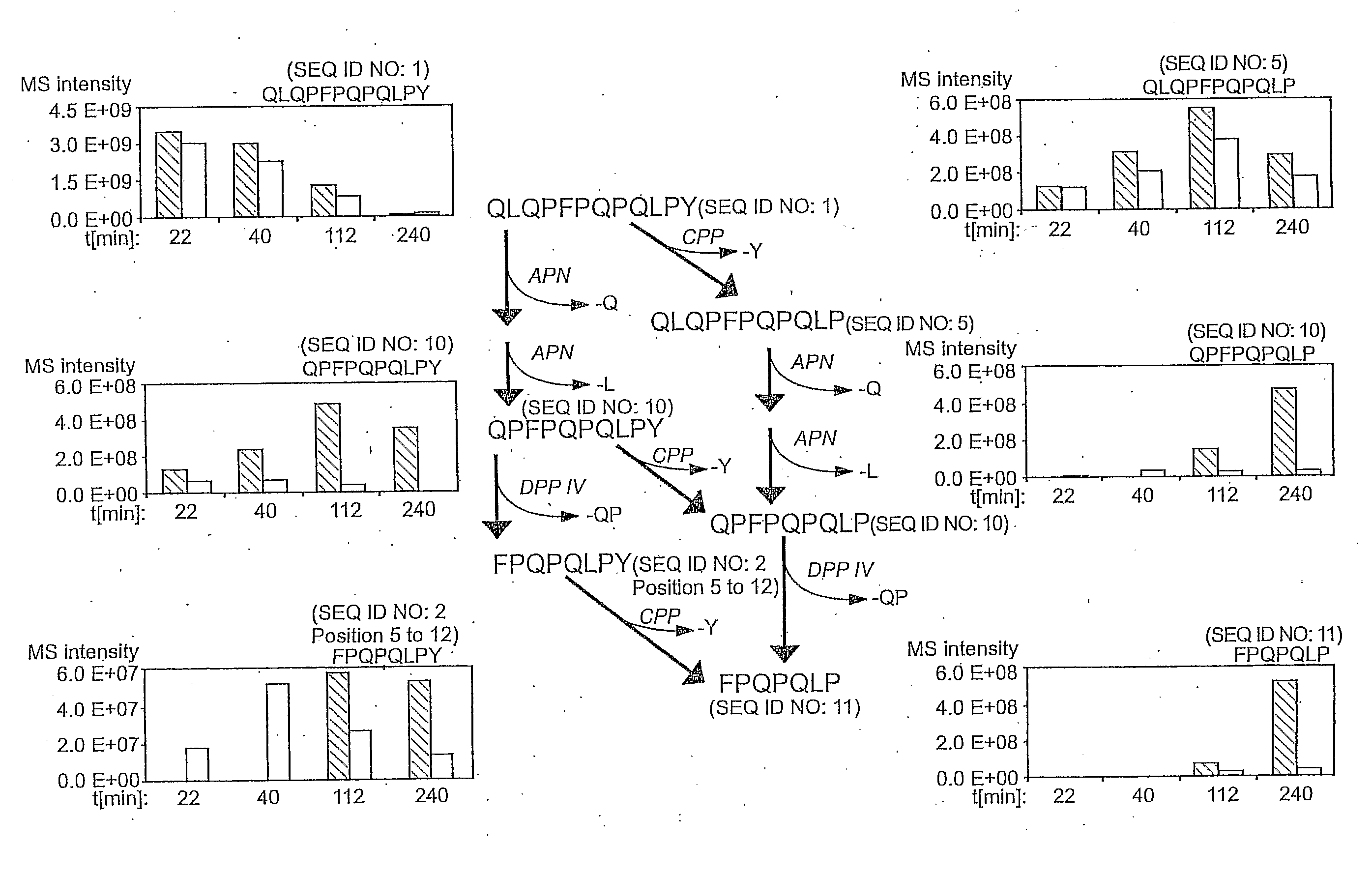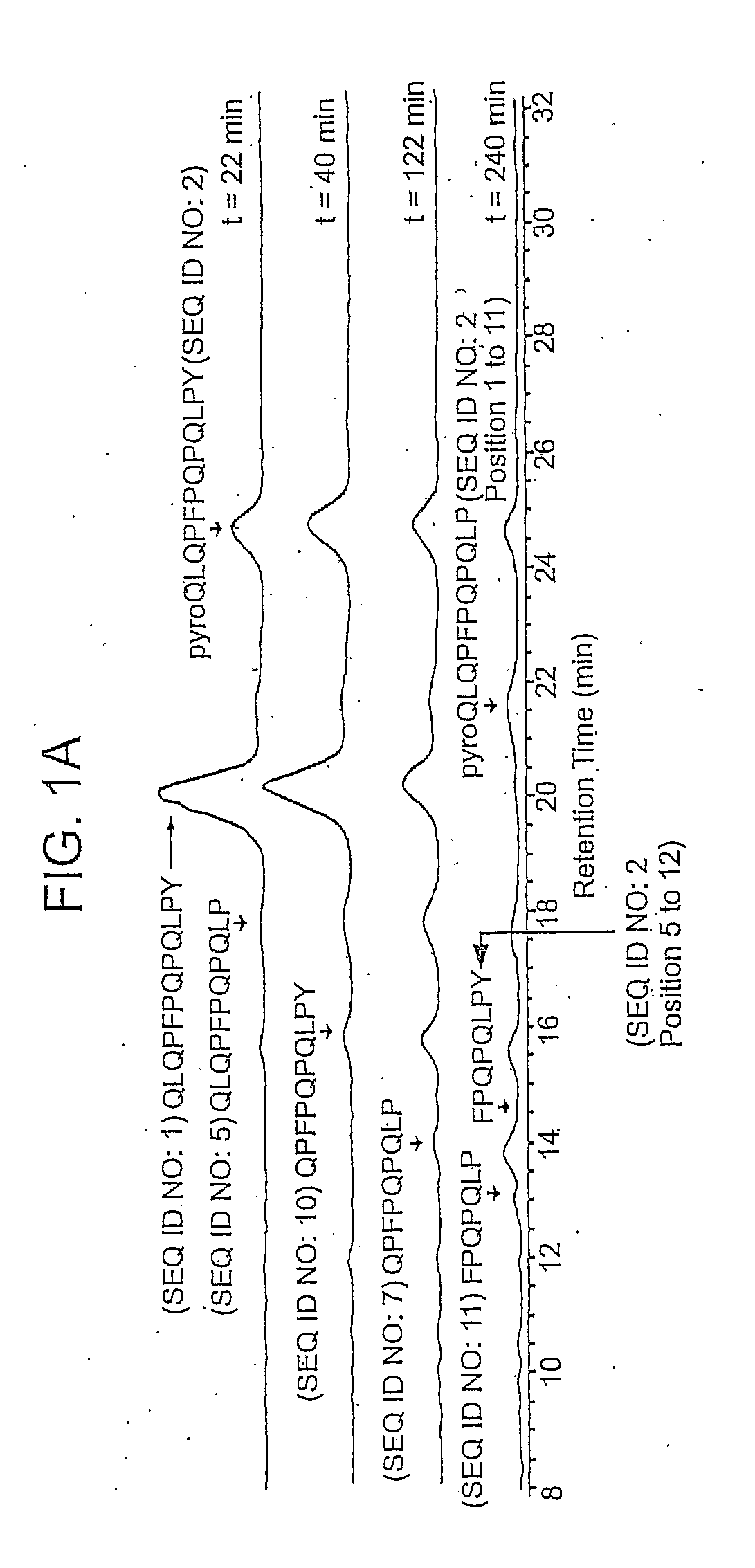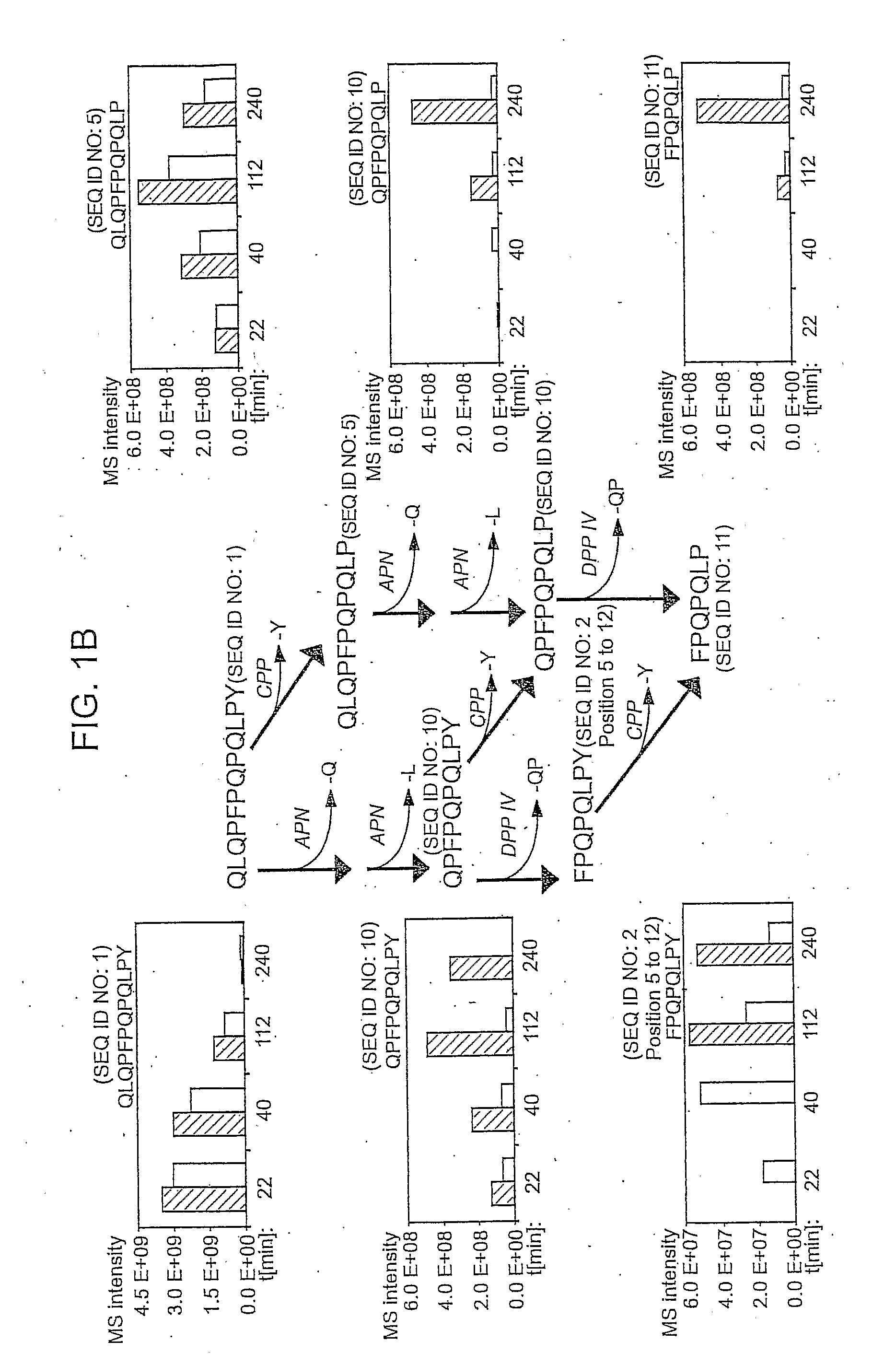Peptides for Diagnostic and Therapeutic Methods for Celiac Sprue
a technology of peptides and celiac sprue, which is applied in the direction of peptide/protein ingredients, peptide sources, instruments, etc., can solve the problems of no good treatment for the disease, eczema is mistakenly diagnosed, and few patients respond poorly or not at all, so as to increase or suppress the inflammatory response
- Summary
- Abstract
- Description
- Claims
- Application Information
AI Technical Summary
Benefits of technology
Problems solved by technology
Method used
Image
Examples
example 1
Immunodominant Peptides of Gliadin are Protease Resistant
[0118]Recent studies have identified a small number of immunodominant peptides from gliadin, which account for most of the stimulatory activity of dietary gluten on intestinal and peripheral T lymphocytes found in Celiac patients. The proteolytic kinetics of these immunodominant peptides were analyzed at the small intestinal surface. Using brush border membrane vesicles from adult rat intestines, it was shown that these proline-glutamine-rich peptides are exceptionally resistant to enzymatic processing, and that dipeptidyl peptidase IV and dipeptidyl carboxypeptidase are the rate-limiting enzymes in their digestion. These results support the conclusions drawn from the tests described in Example 2 that incomplete digestion of gliadin, which results in the formation of the 33-mer oligopeptide and its deamidated counterpart formed by tTGase action, contributes to the disease symptoms of Celiac Sprue and can be employed in improve...
example 2
Immunodominant Peptide of Wheat Gliadin
[0131]It has long been known that the principal toxic components of wheat gluten are a family of closely related Pro-Gln rich proteins called gliadins. Recent reports have suggested that peptides from a short segment of α-gliadin appear to account for most of the gluten-specific recognition by CD4+T cells from Celiac Sprue patients. These peptides are substrates of tissue transglutaminase (tTGase), the primary auto-antigen in Celiac Sprue, and the products of this enzymatic reaction bind to the class 11 HLA DQ2 molecule. This example demonstrates, using a combination of in vitro and in vivo animal and human studies, that this “immunodominant” region of α-gliadin is part of an unusually long proteolytic product generated by the digestive process that: (a) is exceptionally resistant to further breakdown by gastric, pancreatic and intestinal brush border proteases; (b) is the highest specificity substrate of human tissue transglutaminase (tTGase) ...
example 3
[0145]Human leukocyte antigen DQ2 is a class II major histocompatibility complex protein that plays a critical role in the pathogenesis of Celiac Sprue by binding to epitopes derived from dietary gluten and triggering the inflammatory response of disease-specific T cells. Inhibition of DQ2 mediated antigen presentation in the small intestinal mucosa of Celiac Sprue patients therefore represents a potentially attractive mode of therapy for this widespread but unmet medical need. Starting from a pro-inflammatory, proteolytically resistant, 33-residue peptide, (SEQ ID NO:12) LQLQPFPQPEL PYPQPELPYPQPELPYPQPQPF, we embarked upon a systematic effort to dissect the relationships between peptide structure and DQ2 affinity, and to translate these insights into prototypical DQ2 blocking agents. Three structural determinants within the first 20 residues of this 33-mer peptide, including a (SEQ ID NO: 18) PQPELPYPQ epitope, its N-terminal flanking sequence and a downstream Glu residue, were fou...
PUM
| Property | Measurement | Unit |
|---|---|---|
| time | aaaaa | aaaaa |
| time | aaaaa | aaaaa |
| pH | aaaaa | aaaaa |
Abstract
Description
Claims
Application Information
 Login to View More
Login to View More - R&D
- Intellectual Property
- Life Sciences
- Materials
- Tech Scout
- Unparalleled Data Quality
- Higher Quality Content
- 60% Fewer Hallucinations
Browse by: Latest US Patents, China's latest patents, Technical Efficacy Thesaurus, Application Domain, Technology Topic, Popular Technical Reports.
© 2025 PatSnap. All rights reserved.Legal|Privacy policy|Modern Slavery Act Transparency Statement|Sitemap|About US| Contact US: help@patsnap.com



